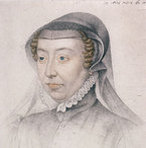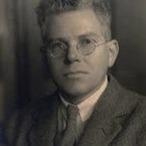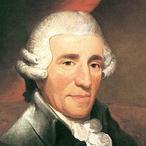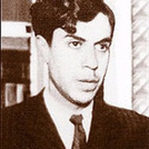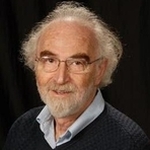|
The third movement of Haydn's Cello Concerto in C Major is one of my favourite pieces of music. It is a truly joyous piece, and one which I find uplifting. The first performance I heard was by 13-year-old Han-na Chang, who took my breath away with her skill, musicianship and dynamism. It is no wonder her teacher, Mstislav Rostropovich, was so impressed with her! I hope in this post to give you a little bit of background to the piece, and to leave you with five of my favourite interpretations: including that of Han-na Chang. The discovery of Haydn’s Cello Concerto No. 1 in C Major in 1961 has been called “the single greatest musicological discovery since the Second World War”[i]. The Concerto gives us an insight into the importance and maturity of the Haydn's early compositions, which have often been deemed as of a lower standard those produced later. The discovery of the Cello Concerto in C major by Oldrich Pulkert at the Prague National Museum debunks this idea, as it: “suggests that Haydn was an extremely capable composer of concertos from an early stage in his career.”[ii] The discovery lead to world-class cellists, such as Mstislav Rostropovich and Jacqueline Du Pré, bringing to the musical world a new understanding of the prodigious talent of the early output of ‘Papa’ Haydn. Indeed, many other famous performers, such as Sol Gabetta, Han-na Chang, Julian Lloyd-Webber, and Daniel Müller-Schott have taken up the work, leading to it becoming one of the “most regularly performed concertos from any period[iii]”. Indeed, David Wyn Jones called the piece “one of the finest artistic expressions of the age[iv]”. But how did this extraordinary piece of work come about? Well, for that we have to look back at the time Joseph Haydn spent at the court of Prince Esterházy. Joseph Haydn joined the court of Prince Paul Anton Esterházy in 1761. The family was extremely wealthy with, among other residences, an ancestral home called Schloss Esterházy in Eisenstadt, and a huge palace in Hungary called Eszterháza, constructed in the 1760s. It was with the Esterházy household that Haydn took the role of Vice-Kapellmeister, taking charge of most of the musical enterprise. It is believed that the Cello Concerto in C major was composed around this time, approximately between 1761-5. In 1766, when the Kapellmeister, Gregor Werner, died, Haydn became full Kapellmeister, and took over the role, controlling the whole musical world in the Esterházy court. Both Prince Paul Anton and, after his death in 1762, Prince Nikolaus "the Magnificent", gave Haydn access to an orchestra with which to both perform and compose, and it is with this orchestra in mind that Haydn would have written the Cello Concerto in C major: “In the early 1760s the orchestra is thought to have consisted of around twelve players: four violins, one viola, one cello, one double bass, one bassoon, two horns and two oboes. All of these players were accomplished freelance musicians, as the instrumental parts in many of Haydn’s early symphonies will testify.”[v] The Concerto is believed to have been written for Haydn’s close friend, the ‘cellist Joseph Weigl. Joseph Weigl had joined the Esterházy musicians in June, 1761, and had married the daughter of the “Secretaire” and Chief Bookkeeper of the Esterházy Administration, Anton Scheffstoss[vi]. We know that Haydn held Weigl in high esteem from his own letters. For instance, in 1772, Haydn wrote the following to Anton Scheffstoss: “…please present my respectful compliments to your wife and the Weigl family (to whom I shall write shortly), and to all other good friends…”[vii] Haydn also became Godfather to Weigl’s son, the future composer and conductor, Joseph Weigl Jr. Haydn took his duties as Godparent very seriously, and was very encouraging to Weigl Jr. In January 1794, Haydn wrote the following letter to his Godson: “Dearest Godson! Haydn also helped another of Weigl’s children, Thaddäus, to open a music-dealer’s business in Vienna. He wrote sent Thaddäus a certificate, to present to the Vienna authorities, in which he praised Thaddäus, and gave his own personal backing to the scheme: “I, the undersigned, declare publicly and to all those whom it may concern that the music engraved under the supervision of Herr Thadäus [sic] Weigl distinguishes itself, over and above everyone else’s, to his great advantage; which one would easily expect from such a man as Herr Thadäus Weigl, inasmuch as he himself is a composer, and possesses all the knowledge necessary to conduct such a business successfully. This is also to the obvious advantage of the state, since then it would no longer be necessary for our native composers to have their works sent abroad to be engraved. Given that the Haydn had such close links with the Weigl family, it is highly probably that the Concerto was written, not only with Weigl in mind, but so that Weigl could “show off” his abilities at court. Edward Neil Furse writes that “Haydn wrote a number of highly virtuosic cello parts for his early symphonies, providing Joseph Weigl with plenty of opportunities to impress...”[x] Karl Geiringer says of the piece that it “[offers] the soloist opportunities to display a substantial skill”[xi] The third movement requires the most technical skill. This is most noticeable in the use of the ‘cello’s high register, the fast plunges into the very lowest register, the double-stopped passages, and the semi- and demisemiquaver runs which suffuse the piece. Furse writes that “Virtuosity is a characteristic feature of this final movement.”[xii] For an excellent analysis of the C major Concerto, please see Edward Niel Furse’s Master’s Thesis, which is available online. Click here to read a copy. Below are five different versions of the 3rd Movement for you to watch. I make no judgement as to who is “best”, just that all are thoroughly engaged in the piece, and all play with a level of virtuosity which befit the composition we have been discussing. The performers are: Mstislav Rostropovich Han-na Chang (13 years old when this was recorded!) Julian Lloyd-Webber (Love the shirt!) Daniel Müller-Schott Sol Gabetta Enjoy! [i] Robbins Landon, H. C (1998) The Pre-Classical Concerto and the Concerto Parallel to Mozart. in Layton, Robert (Ed.), A Companion to the Concerto (Oxford: Oxford University Press) p 63.
[ii] Furse, Edward Niel. (2009) Perspectives on the reception of Haydn’s Cello Concerto in C, with particular reference to Musicological writings in English on Haydn’s concertos and the Classical Concerto. (A thesis submitted to The University of Birmingham for the Degree of Master of Music). p 42. [iii] ibid p 5. [iv] Jones, David Wyn (ed.), (2002) Haydn. Oxford Composer Companions. p 45. [v] Furse, Edward Niel. (2009) Perspectives on the reception of Haydn’s Cello Concerto in C, with particular reference to Musicological writings in English on Haydn’s concertos and the Classical Concerto. (A thesis submitted to The University of Birmingham for the Degree of Master of Music). p 9. [vi] Robbins Landon, H. C (Ed.) (1959) The Collected Correspondence and London Notebooks of Joseph Haydn. p 8 (note) [vii] Letter to Anton Scheffstoss, “Secretaire” and Chief Bookkeeper of the Esterházy Administration.German. Robbins Landon , H.C. [Ed.] The Collected Correspondence and London Notebooks of Joseph Haydn. p 15 [viii] Letter to Thaddäus Weigl, Vienna. German. Robbins Landon , H.C. [Ed.] The Collected Correspondence and London Notebooks of Joseph Haydn. p 190 [ix] Certificate for Thaddäus Weigl. German. From an old copy. Robbins Landon , H.C. [Ed.] The Collected Correspondence and London Notebooks of Joseph Haydn. p 190-1 [x] Furse, Edward Niel. (2009) Perspectives on the reception of Haydn’s Cello Concerto in C, with particular reference to Musicological writings in English on Haydn’s concertos and the Classical Concerto. (A thesis submitted to The University of Birmingham for the Degree of Master of Music). p 5. [xi] Geiringer, Karl, (1968) Haydn: A Creative Life in Music (3rd edition, Berkeley: University of California Press) p 235. [xii] Furse, Edward Niel. (2009) Perspectives on the reception of Haydn’s Cello Concerto in C, with particular reference to Musicological writings in English on Haydn’s concertos and the Classical Concerto. (A thesis submitted to The University of Birmingham for the Degree of Master of Music). p 20.
1 Comment
|
MOST VIEWED POSTS
© James Edward Hughes 2013
 RSS Feed
RSS Feed
